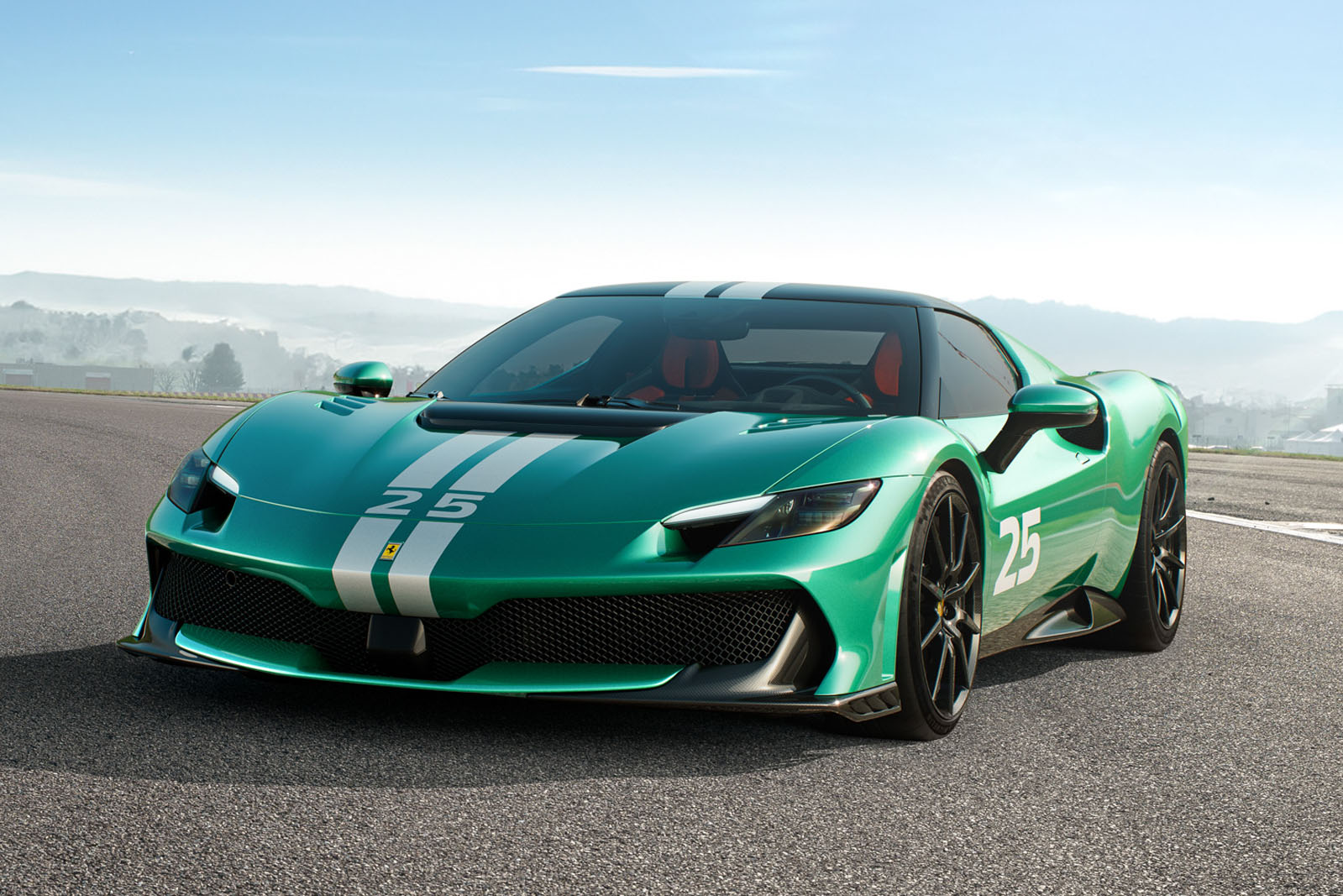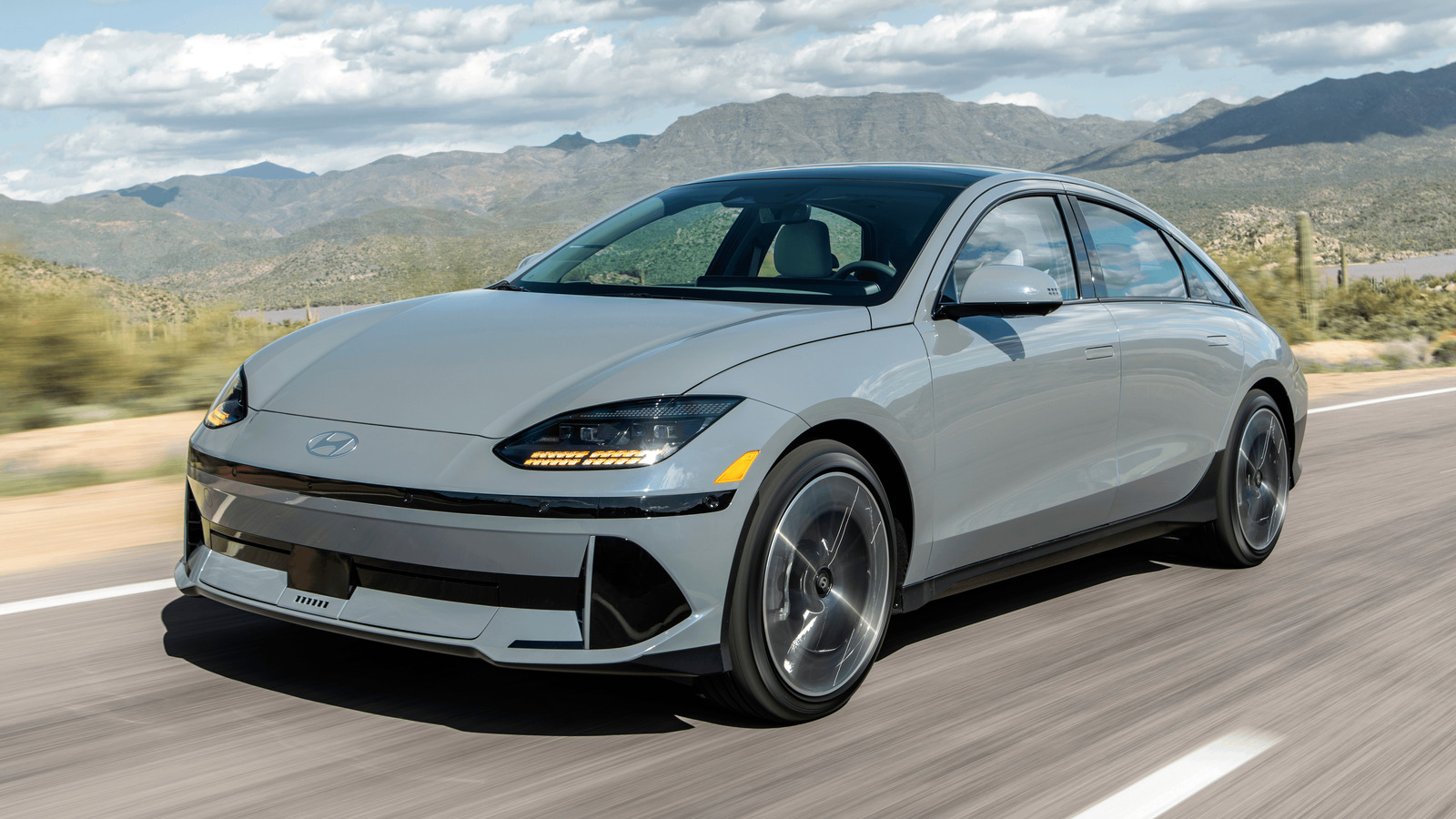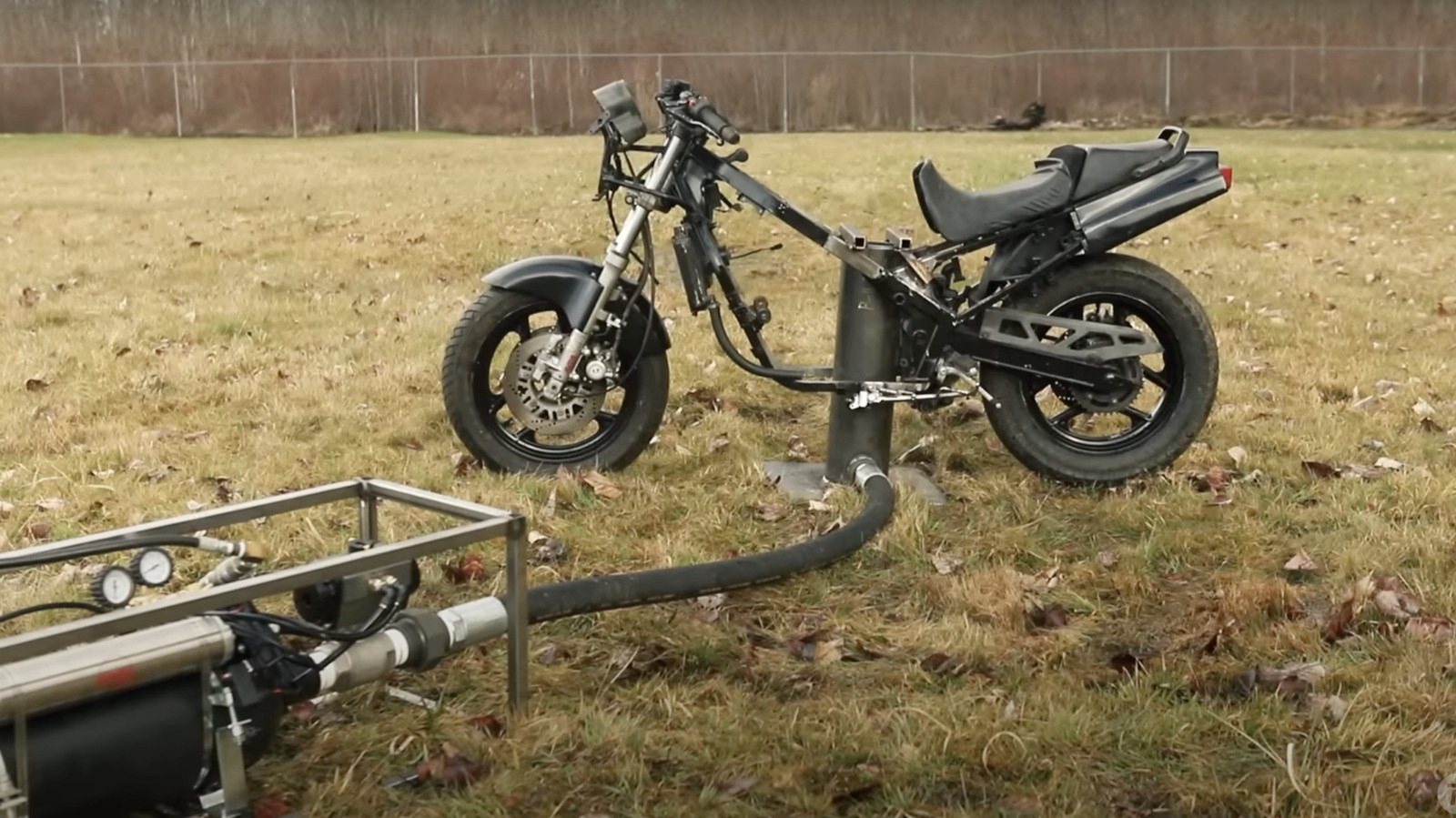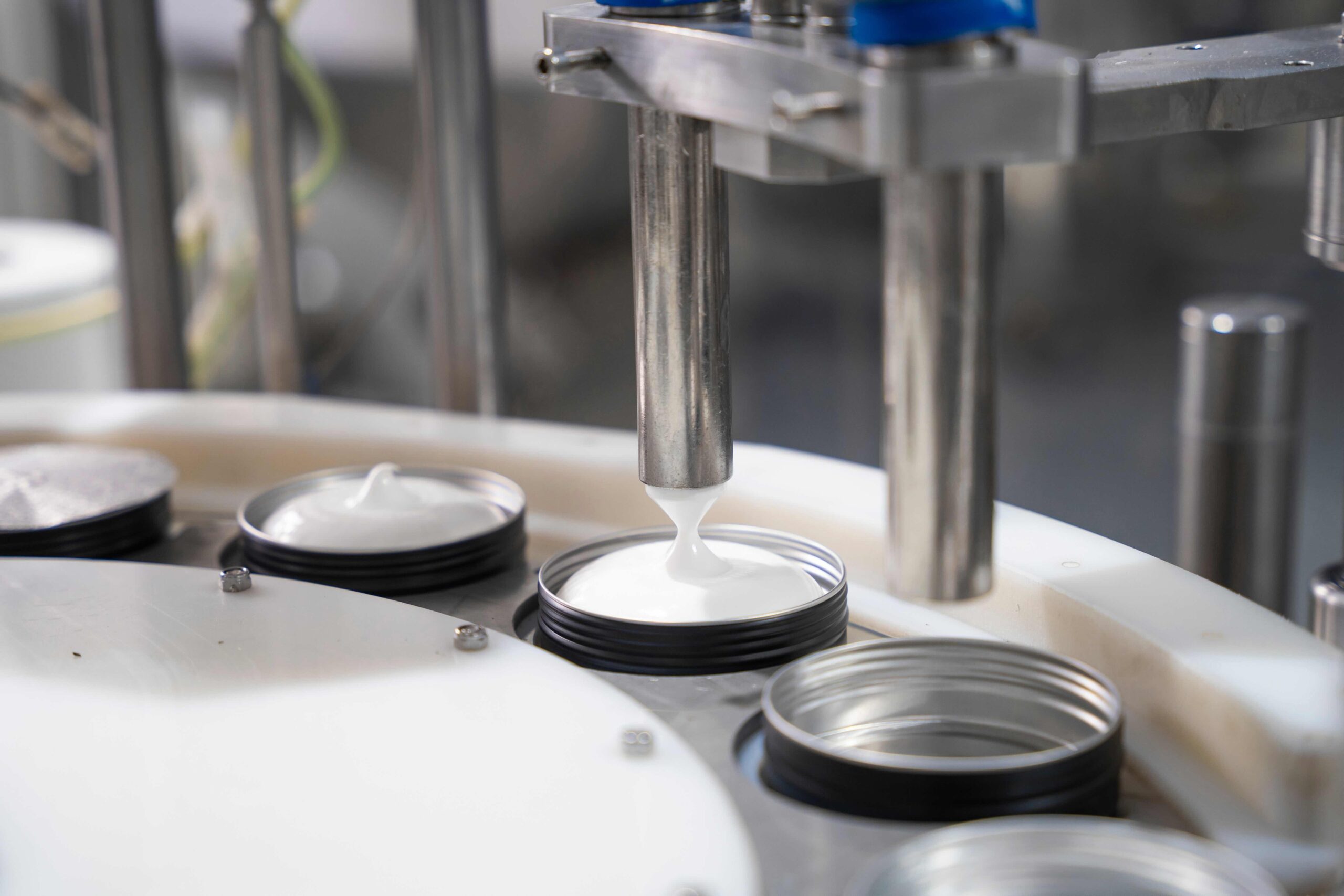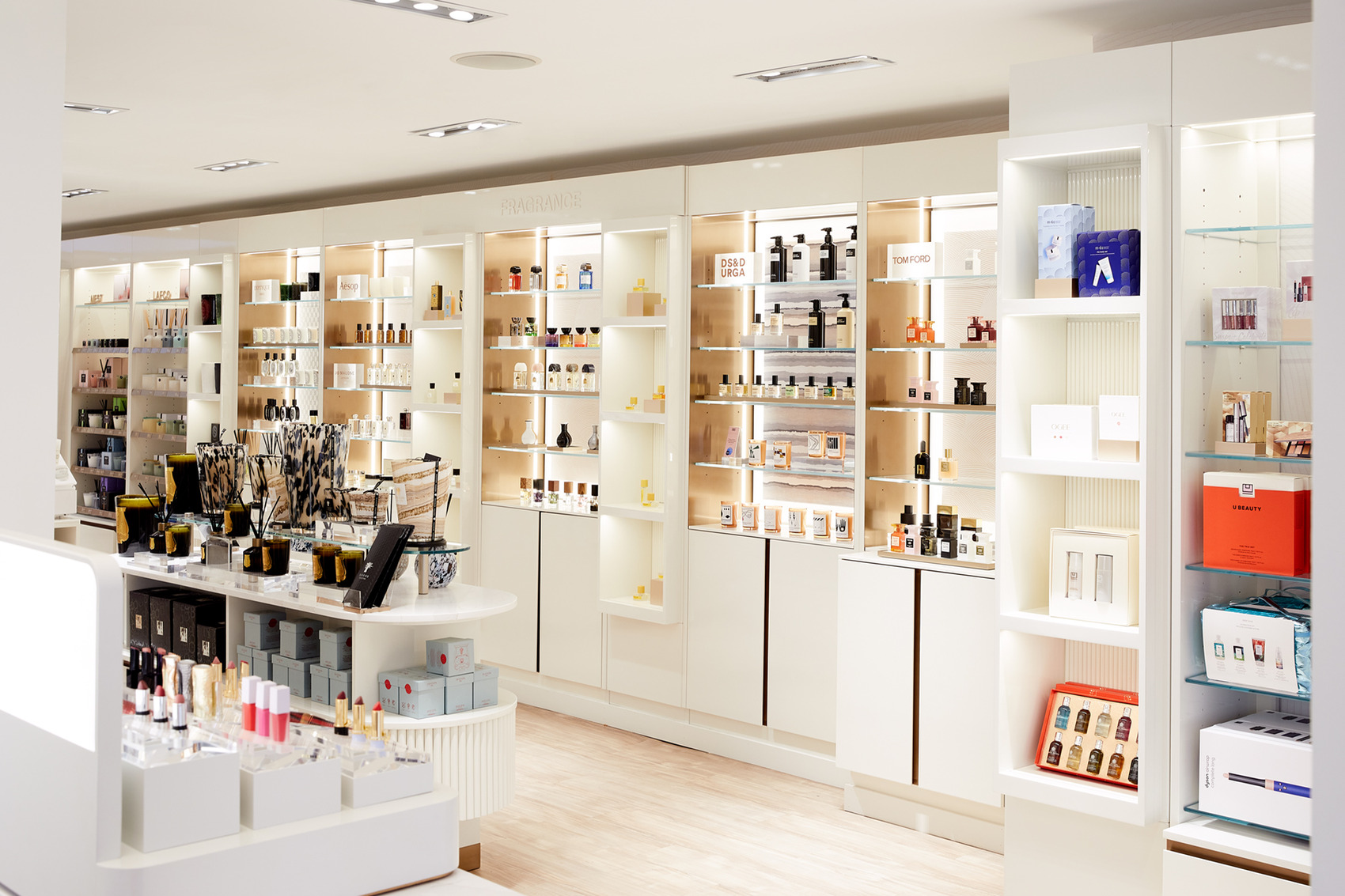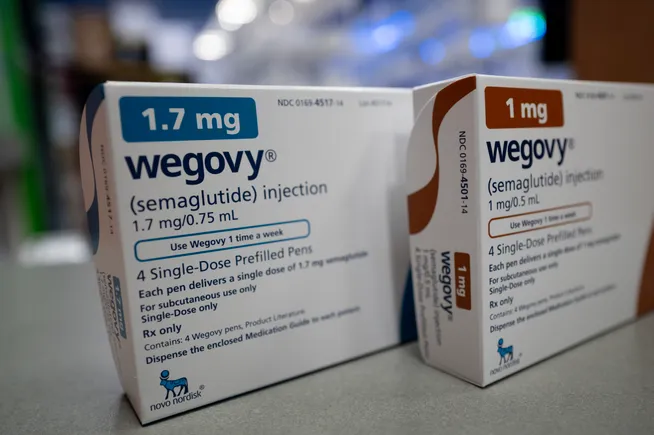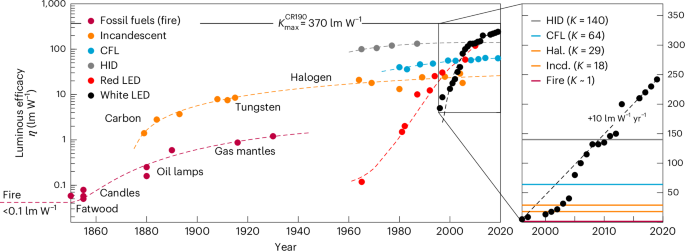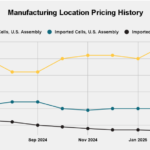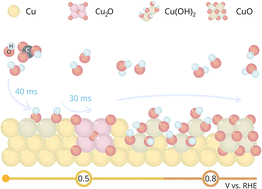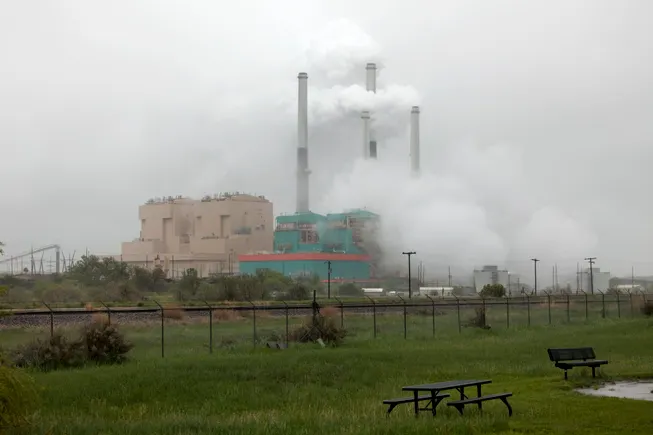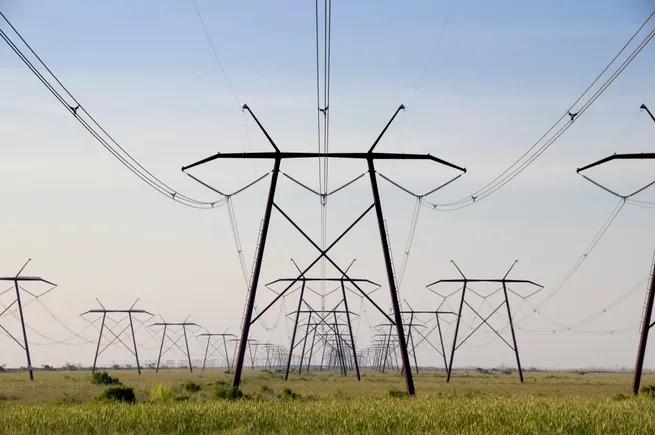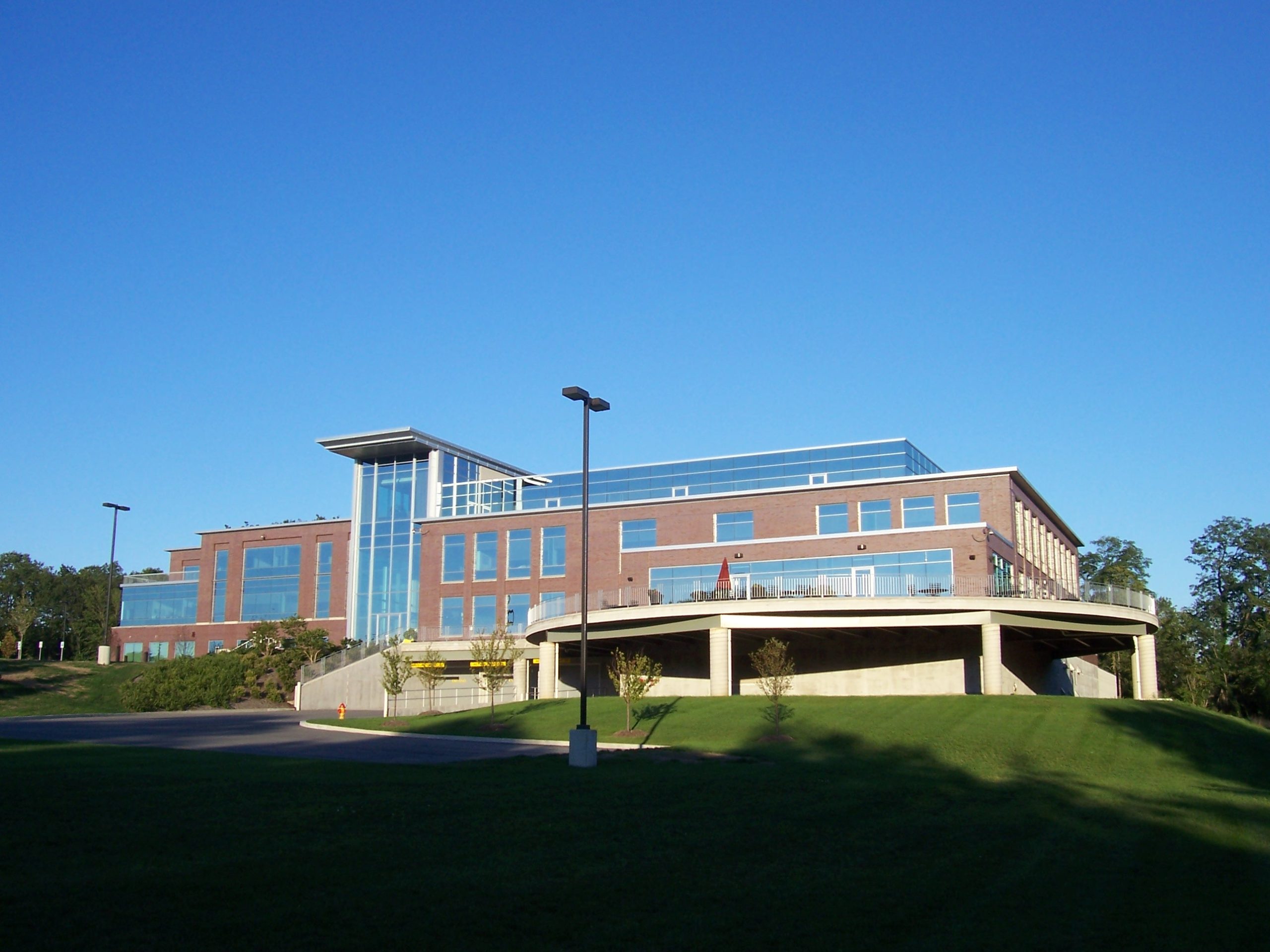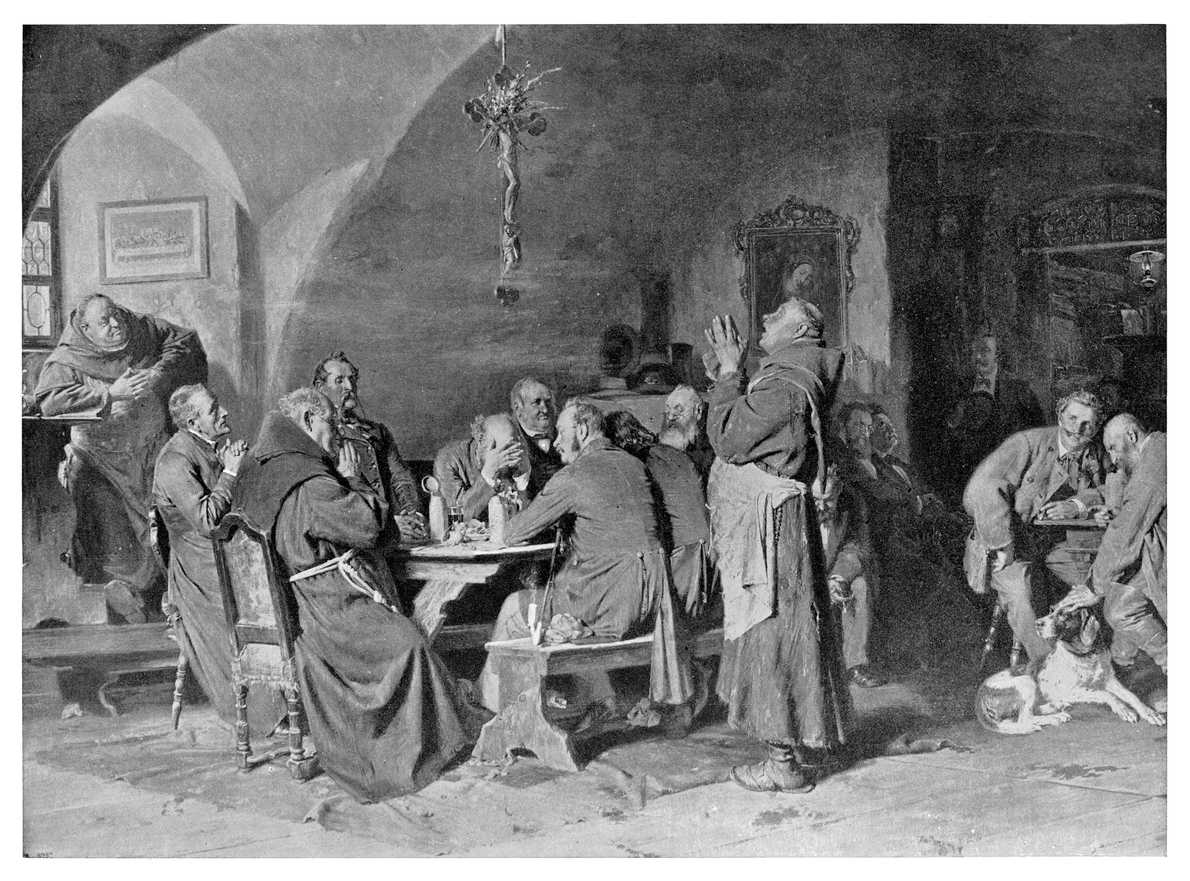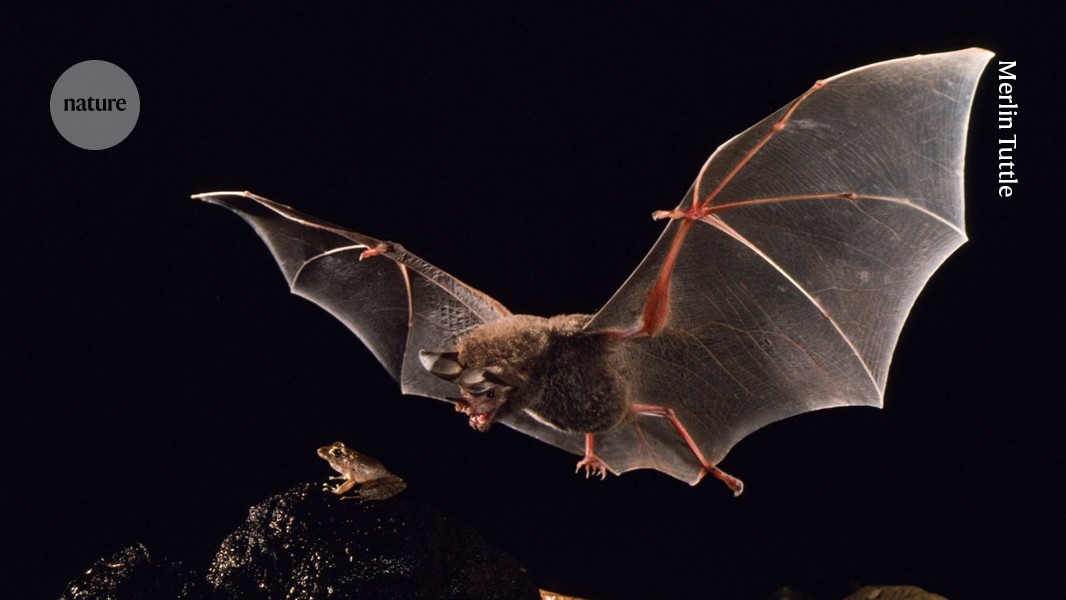db's Bordeaux correspondent Colin Hay wraps up his review of the Médoc’s en primeur offerings by selecting some of the stars from the appellations of Haut-Médoc, Listrac-Médoc, Médoc and Moulis-en-Médoc.
I conclude my review of the left-bank in this intriguingly complex and difficult vintage with a selection of the wines of the
appellations of Haut-Médoc, Listrac-Médoc, Médoc and Moulis-en-Médoc.
The stars here are, perhaps unremarkably, the impressive duo of Haut-Médoc classed growths that are
La Lagune and
Cantemerle, a fabulous pair of Haut-Médocain superstars that both merit more attention than they receive, in
de Malleret and
Sociando Mallet and the now invariably transcendent
Branas Grand-Poujeaux.
Highlights in 2024
Best of each appellation:
- La Lagune (Haut-Médoc) 92-94+
- G d’Estournel (Médoc) 89-91
- Fonréaud (Listrac-Médoc) 87-89
- Branas Grand-Poujeaux (Moulis-en-Médoc) 91-93
Value picks:
- Cantemerle (Haut-Médoc) 91-93
- de Malleret (Haut-Médoc) 90-92
- Sociando Mallet (Haut-Médoc) 90-92
- La Sirène de Giscours (Haut-Médoc) 89-91
- Chasse-Spleen (Moulis-en-Médoc) 89-91
A note on the ratings
The tasting notes provide an indicative rating for each wine alongside the comments, which aim is to describe the wine in the context of the vintage, the appellation and recent vintages of the same and similar wines, rather than to judge the wine
per se. Obviously they are by somewhat subjective, but I urge you look at the two together and, if anything, to privilege the comment over the rating. Naturally, the ratings reflect my subjective evaluations and relative preferences between wines – bear in mind that your palate may differ from mine ,but I hope the comments give enough information to be able to recalibrate my ratings and, in so doing, to align them more closely to your own taste.
2024 is, of course, a far from homogeneous vintage – and, consequently, my ratings span a considerable range (from close to the very top of the scale downwards). I see little interest, either for the consumer or the producer, in publishing very low scores. Consequently, I have decided not to publish scores or notes for classed growths (or equivalent wines) that I have rated below 90 (here the range 89-91) and for
crus bourgeois (or equivalent wines) that I have rated below 88 (here the range 87-89).
Finally,
élevage is likely to be very important in determining the final quality in bottle of these wines. I am no soothsayer and cannot predict how that will turn out (another reason for the use of banded ratings). But all
en primeur ratings should be treated with caution and taken with a certain pinch of salt.
Detailed tasting notes
Haut-Médoc & Médoc
 Haut-Médoc de Giscours
Haut-Médoc de Giscours (Haut-Médoc; 57% Cabernet Sauvignon; 38% Merlot; 5% Cabernet Franc; 12.70% alcohol; tasted at the property with Jérôme Poisson). Plush and plump. Dark berry fruited. A little cherry and graphite, even a little ‘Giscours’ cedar. This is now to Giscours what Beaumont is to Beychevelle – namely, stylish, very well made and with the signature of the more illustrious property. Plush with a lovely juicy plum and red berry fruit. Glacial and cool at the core, quite ample in the mouth and finely-textured.
88-90.
La Siréne de Giscours (Haut-Médoc; 52% Cabernet Sauvignon; 48% Merlot; 35 hl/ha; 13% alcohol; tasted at the property with Jérôme Poisson). Darker berry fruited than the Haut-Médoc – we move from raspberry to mulberry and black berry, a touch of bramble too. But it’s similar in form and style and equally well made. The sheets of layered fruit are just as ample but a little fuller, giving this a lovely creamy texture. There’s a hint of ferrous minerality that I don’t find in the
grand vin.
89-91.
Château Beaumont (Haut-Médoc; 65% Cabernet Sauvignon; 30% Merlot; 5% Petit Verdot; a final yield of 43 hl/ha; 13% alcohol; tasted twice, first at the UGC press tasting at the
Cité du Vin). It’s always good to taste this before Beychevelle. It typically gives a sense of what to expect. And this is very well done and, as ever, cut from the same stylistic cloth. Quite succulent and nutty and creamy in the mid-palate, but sapid and juicy too. Not the complexity and sheer class of some recent vintage, but certainly well-managed. Impressive texturally.
88-90.
Château Belgrave (Haut-Médoc; 64% Cabernet Sauvignon; 36% Merlot; 12.5% alcohol; tasted twice, first at the UGC press tasting at the
Cité du Vin). Quite delicate aromatically, with subtle and quite classical cedary notes enrobing the fresh, crisp, bright dark berry fruits. A little hint of almond. On the palate this has a rather pinched and tight frame, slender for a classed growth in any vintage. But that has its advantages. The extraction is gentle, the tannins fine-grained and this is quite sinuous. But it’s decidedly light and won't be to all tastes.
88-90.
Château de Camensac (Haut-Médoc; 60% Cabernet Sauvignon; 40% Merlot; a final yield of 44 hl/ha; 13% alcohol; tasted twice, first at the UGC press tasting at the
Cité du Vin). Earthy, almost clay-y, in its minerality. Red and darker berry fruits, a little cherry and a sprig or two of oregano. More ample than Belgrave and more crystalline too, with the fruit having more space to glide and circle in. But it’s rather monotone. Texturally, this is well-achieved but it’s hardly the most exciting of wines.
87-89.
Château Cantemerle (Haut-Médoc; 73% Cabernet Sauvignon; 18% Merlot; 7% Cabernet Franc; 2% Petit Verdot; tasted twice, first at the UGC press tasting at the
Cité du Vin; Eric Boissenot is the consultant here). Much more floral and Margellais than the other classed growths of the
appellation, other than La Lagune (tasted later), with a gorgeously lilac and violet note to the aromatics. Dark cherries and blueberries, a few blackcurrants too. Soft and gracious on the attack with a lovely mouthfeel. It’s a little pinched towards the finish and becomes increasingly linear – but that gives it the sustenance to linger long on the palate. Some, I know, will covet more weight, depth and density, but I enjoy this more delicate style, above all in a vintage like this and I like the consistency of the work that is going on here.
91-93.
G d’Estournel (Médoc; 61% Merlot; 30% Cabernet Sauvignon; 8% Cabernet Franc; 1% Petit Verdot; pH 3.61; IPT 69; aging in oak barrels, 12% of them new; 12.2% alcohol; tasted with Dominique Arangoits at Cos d’Estournel). Distinctive aromatically and very northern Médocain in its personality. Iodine and sea salt, sea spray, a dark plummy fruit with brambles and black berries too. A hint of oak smoke. Ample, in its style, though with much less oak than of old, nicely layered and yet at the same time quite sinuous. Juicy. Fine and chewy on the finish. This has been expertly managed.
89-91.
Château La Lagune (Haut-Médoc; 52% Cabernet Sauvignon; 42% Merlot; 6% Petit Verdot; a final yield of 26 hl/ha; pH 3.4; 13% alcohol; certified biodynamic; tasted only once, at the UGC press tasting at the
Cité du Vin). Radiantly aerial aromatically, with more lift than the other wines of the
appellation and that floral touch that reminds one we’re near the
appellation boundary with Margaux – something only t found elsewhere in this vintage at nearby Cantemerle. But this is a different kind of florality, more vivid and bright and lifted – white spring flowers freshly plucked from the hedgerow. As ever this feels very natural and I love the cedary notes in the depths of the mid-palate. This is one of the rare wines of the
appellation with depth and layering in the mid-palate. Plump, plush and juicy; succulent, fresh and lifted on the finish. Vivid in a way that few achieve in the vintage. Very fine, refined, natural and harmonious.
92-94+.
Château de Lamarque (Haut-Médoc; 64% Cabernet Sauvignon; 20% Merlot; 16% Petit Verdot; a final yield of 38 hl/ha; 13% alcohol; tasted only once at the UGC press tasting at the
Cité du Vin). A hint of bulby florality that I like and that works well with the dark stone and berry fruits. There’s a hint of cedar too. Quite classical and with a soft and caressing, stylish, mouthfeel. Creamily textured. Likely to represent excellent value. Promising.
88-90.
Château Fleur la Mothe (Médoc;
cru bourgeois supérieur; 45% Cabernet Sauvignon; 35% Merlot; 20% Petit Verdot). Riper than most of its neighbours with an earthy minerality alongside the crushed berry fruits aromatics – red plums, black berries and blackcurrants, a wild herbal note too. Pure and precise, with ripe and gently supporting tannins elongating the finish. Relatively simple and not at the level of the last two vintages, but nicely done in the context of the challenges of this one.
87-89.
Château Potensac (Médoc; 45% Cabernet Sauvignon; 33% Merlot; 22% Cabernet Franc – all old vine; a final yield of 35 hl/ha; 12.2%
vin de presse; IPT 74; pH 3.63; 12.9; tasted at Château Nénin). Lovely dark plum and bramble fruits. Crunchy, pure and nicely focussed. A lovely mouthfeel and I really like the shapely flow of the wine over the palate. Grippy tannins form and mould (rather than sculpt) the lifted finish. There’s just a hint of dryness on the finish (note the IPT at 74) but this is very well done. In the context of the vintage there’s a lot of wine here for the money.
88-90.
Château de Malleret (Haut Médoc;
cru bourgeois exceptionnel; 66% Cabernet Sauvignon; 34% Merlot; 12.8% alcohol). This is excellent and shows just how good some of the
crus bourgeois exceptionnels now are, above all in the context of challenging and technical vintage. This has a very pure, precise and distinctive florality and a lovely dark berry fruit profile – blackberry, blackcurrant and blueberry, maybe a little black cherry too (showing the ripeness). Plump and succulent on the palate, with plenty of flesh and circulating up-swells of fresh sapid juiciness. Better than a number of the classed growths.
90-92.
Château Paloumey (Haut-Médoc;
cru bourgeois exceptionnel; 58% Cabernet Sauvignon; 39% Merlot; 3% Petit Verdot; certified organic Impressively pure and crystalline with plenty of precision and also energy and vivacity – another excellent advertisement for organic viticulture even in what must have proved a challenging vintage. Intense dark berry fruits and a hint of graphite. Thyme. Bay leaf. This is long and gently tapering, the tannins very polished and gracious.
87-89.
Madame de Beaucaillou (Haut-Médoc; 63% Merlot; 3% Petit Verdot; 34% Cabernet Sauvignon; a final yield of 24 hl/ha after lots of sorting; same volume as last year but produced from an additional 20 hectares in Cussac, largely of Cabernet Sauvignon on gravel; 13.5% alcohol; tasted at Ducru Beaucaillou). Crunchy, with bright dark berry fruits, bay leaf and a little dark stone fruit. Nicely pure and ripe. A trace of graphite. Impressive for the
appellation. The tannins are quite chunky but this gives the impression of coming from a somewhat riper vintage in the end. Well done.
88-90+.
Château Sénilhac (Haut-Médoc;
cru bourgeois; from 22 hectares on argilo-calcaire; 58% Merlot; 31% Cabernet Sauvignon; 11% Petit Verdot; 13% alcohol; tasted at Château Larteau). Lithe and limpid, a nice mouthful of ripe berry fruits. Fresh, bright and crunchy – more red berries and plums than darker fruits, but with a little damson. Salt and pepper from the Petit Verdot. Nicely done. This certainly merits its classification.
87-89.
Château Sociando Mallet (Haut-Médoc; 57% Merlot; 43% Cabernet Sauvignon; 13% alcohol; tasted twice). A little closed at first but very pure and dark-fruited, crystalline too with a nice sense of purity and focussed precision. Cassis and graphite. Quite ample, limpid and lithe. No great concentration but very authentic and well-managed. Bright and
croquant in its fruit profile. Quite juicy on the finish. Another success from a persistent over-achiever.
90-92.
Château La Tour Carnet (Haut-Médoc; 63% Merlot – by some way the highest proportion in the Médoc; 33% Cabernet Sauvignon; 3% Petit Verdot; 1% Cabernet Franc; a final yield of just 25 hl/ha over the property’s vast 234 hectares; tasted twice, the second time at the UGC press tasting). This, as ever, is very well made with nothing out of place. Very technically accomplished, it is plush and soft and seductive, the fruit pure and
croquant without ever hinting at astringency and the tight, taut and slender frame gives this a sense of depth and density that it might otherwise lack. It’s relatively short on the finish but it definitely reflects a series of good choices. Balanced and harmonious; cool and soft.
88-90.
Listrac-Médoc
Château Fonréaud (Listrac-Médoc; 55% Cabernet Sauvignon; 40% Merlot; 5% Petit Verdot; tasted twice, first at the UGC press tasting at the
Cité du Vin). Very ‘Listrac’, with an almost lime character to its minerality and the lift and crumbly tannins than come from the limestone sous-sol. Dark berries and damsons, a little thyme too, this is appealing aromatically and also has a nice evolution over the palate. The tannins will need a little time to resolve, but they are ripe and this is quite a good result in the context of the vintage, confirmed when re-tasted at the UGC press tasting.
87-89.
Moulis-en-Médoc
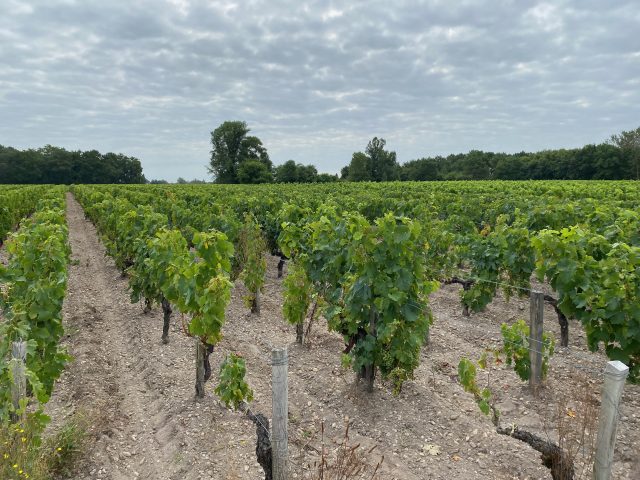 Château Branas Grand-Poujeaux
Château Branas Grand-Poujeaux (Moulis-en-Médoc; 55% Cabernet Sauvignon; 35% Merlot; 10% Petit Verdot; 92% aging in oak barrels of which 50% are new, the rest in amphora; 13% alcohol; there’s a little less Merlot here because of the mildew). Not the easiest place to make wine in this vintage, with lots of mildew losses on important parcels – above all the Merlot. But there’s no sense of that in the wine itself, other than the more elevated level of Cabernet Sauvignon. This is reassuringly Branas in its richness, depth and sense of layering, even if it’s not as precise or focussed as the great recent vintages from here. But there’s a pleasing levity and an almost aerial quality to this that must have been difficult to achieve. I love the peppery notes that underscore the dark berry and cassis fruit and the natural sweet juiciness of the fruit. Graphite a plenty. Characteristically bold, the most powerful wine of the
appellation in this vintage and probably the best.
91-93.
Château Chasse-Spleen (Moulis-en-Médoc; 60% Cabernet Sauvignon; 33% Merlot; 7% Petit Verdot; a final yield of 40 hl/ha; 12.5% alcohol; tasted twice, first at the UGC press tasting at the
Cité du Vin). This is nicely done, quite classical in its way with a dark stone fruit aromatics generously enrobed in graphite. Black cherries and brambles – picked just ripe. The frame is reasonably broad, certainly after tasting the Listrac wines, and the tannins are fine-grained and gentle, never quite crossing that fine line towards dryness. Reasonably plump and plush for the vintage.
89-91.
Château Poujeaux (Moulis-en-Médoc; 50% Cabernet Sauvignon; 35% Merlot; 15% Petit Verdot; a final yield of 30 hl/ha; 12.5% alcohol; tasted three-time, the first at the UGC press tasting at the
Cité du Vin, then again at the offices of a
négociant and finally with Mathieu Cuvelier at Clos Fourtet). Quite nutty in its aromatic profile – usually a good sign of the ripeness of the pips – with dark berry fruits but little of the graphite or cedar of Chasse-Spleen, though a little more when re-tasted. Glossy and sleek on the palate, unusually so in fact for the vintage, and quite crystalline on the attack and opening, the extraction clearly very gentle. But you see why by the time you get to the finish where the acidity seem to gather and the tannins shade a little towards the dry-side. A little grainy on the finish. The Petit Verdot brings a green peppercorn note to this that helps sustain this on the finish.
88-90.
For full appellation-by-appellation reviews, see here:
St-Estèphe, Paulliac,
Saint-Julien,
Margaux, Haut-Médoc, Listrac-Médoc, Médoc, & Moulis-en-Médoc, Pomerol, and Saint-Emilion

 Haut-Médoc de Giscours (Haut-Médoc; 57% Cabernet Sauvignon; 38% Merlot; 5% Cabernet Franc; 12.70% alcohol; tasted at the property with Jérôme Poisson). Plush and plump. Dark berry fruited. A little cherry and graphite, even a little ‘Giscours’ cedar. This is now to Giscours what Beaumont is to Beychevelle – namely, stylish, very well made and with the signature of the more illustrious property. Plush with a lovely juicy plum and red berry fruit. Glacial and cool at the core, quite ample in the mouth and finely-textured. 88-90.
La Siréne de Giscours (Haut-Médoc; 52% Cabernet Sauvignon; 48% Merlot; 35 hl/ha; 13% alcohol; tasted at the property with Jérôme Poisson). Darker berry fruited than the Haut-Médoc – we move from raspberry to mulberry and black berry, a touch of bramble too. But it’s similar in form and style and equally well made. The sheets of layered fruit are just as ample but a little fuller, giving this a lovely creamy texture. There’s a hint of ferrous minerality that I don’t find in the grand vin. 89-91.
Château Beaumont (Haut-Médoc; 65% Cabernet Sauvignon; 30% Merlot; 5% Petit Verdot; a final yield of 43 hl/ha; 13% alcohol; tasted twice, first at the UGC press tasting at the Cité du Vin). It’s always good to taste this before Beychevelle. It typically gives a sense of what to expect. And this is very well done and, as ever, cut from the same stylistic cloth. Quite succulent and nutty and creamy in the mid-palate, but sapid and juicy too. Not the complexity and sheer class of some recent vintage, but certainly well-managed. Impressive texturally. 88-90.
Château Belgrave (Haut-Médoc; 64% Cabernet Sauvignon; 36% Merlot; 12.5% alcohol; tasted twice, first at the UGC press tasting at the Cité du Vin). Quite delicate aromatically, with subtle and quite classical cedary notes enrobing the fresh, crisp, bright dark berry fruits. A little hint of almond. On the palate this has a rather pinched and tight frame, slender for a classed growth in any vintage. But that has its advantages. The extraction is gentle, the tannins fine-grained and this is quite sinuous. But it’s decidedly light and won't be to all tastes. 88-90.
Château de Camensac (Haut-Médoc; 60% Cabernet Sauvignon; 40% Merlot; a final yield of 44 hl/ha; 13% alcohol; tasted twice, first at the UGC press tasting at the Cité du Vin). Earthy, almost clay-y, in its minerality. Red and darker berry fruits, a little cherry and a sprig or two of oregano. More ample than Belgrave and more crystalline too, with the fruit having more space to glide and circle in. But it’s rather monotone. Texturally, this is well-achieved but it’s hardly the most exciting of wines. 87-89.
Château Cantemerle (Haut-Médoc; 73% Cabernet Sauvignon; 18% Merlot; 7% Cabernet Franc; 2% Petit Verdot; tasted twice, first at the UGC press tasting at the Cité du Vin; Eric Boissenot is the consultant here). Much more floral and Margellais than the other classed growths of the appellation, other than La Lagune (tasted later), with a gorgeously lilac and violet note to the aromatics. Dark cherries and blueberries, a few blackcurrants too. Soft and gracious on the attack with a lovely mouthfeel. It’s a little pinched towards the finish and becomes increasingly linear – but that gives it the sustenance to linger long on the palate. Some, I know, will covet more weight, depth and density, but I enjoy this more delicate style, above all in a vintage like this and I like the consistency of the work that is going on here. 91-93.
G d’Estournel (Médoc; 61% Merlot; 30% Cabernet Sauvignon; 8% Cabernet Franc; 1% Petit Verdot; pH 3.61; IPT 69; aging in oak barrels, 12% of them new; 12.2% alcohol; tasted with Dominique Arangoits at Cos d’Estournel). Distinctive aromatically and very northern Médocain in its personality. Iodine and sea salt, sea spray, a dark plummy fruit with brambles and black berries too. A hint of oak smoke. Ample, in its style, though with much less oak than of old, nicely layered and yet at the same time quite sinuous. Juicy. Fine and chewy on the finish. This has been expertly managed. 89-91.
Château La Lagune (Haut-Médoc; 52% Cabernet Sauvignon; 42% Merlot; 6% Petit Verdot; a final yield of 26 hl/ha; pH 3.4; 13% alcohol; certified biodynamic; tasted only once, at the UGC press tasting at the Cité du Vin). Radiantly aerial aromatically, with more lift than the other wines of the appellation and that floral touch that reminds one we’re near the appellation boundary with Margaux – something only t found elsewhere in this vintage at nearby Cantemerle. But this is a different kind of florality, more vivid and bright and lifted – white spring flowers freshly plucked from the hedgerow. As ever this feels very natural and I love the cedary notes in the depths of the mid-palate. This is one of the rare wines of the appellation with depth and layering in the mid-palate. Plump, plush and juicy; succulent, fresh and lifted on the finish. Vivid in a way that few achieve in the vintage. Very fine, refined, natural and harmonious. 92-94+.
Château de Lamarque (Haut-Médoc; 64% Cabernet Sauvignon; 20% Merlot; 16% Petit Verdot; a final yield of 38 hl/ha; 13% alcohol; tasted only once at the UGC press tasting at the Cité du Vin). A hint of bulby florality that I like and that works well with the dark stone and berry fruits. There’s a hint of cedar too. Quite classical and with a soft and caressing, stylish, mouthfeel. Creamily textured. Likely to represent excellent value. Promising. 88-90.
Château Fleur la Mothe (Médoc; cru bourgeois supérieur; 45% Cabernet Sauvignon; 35% Merlot; 20% Petit Verdot). Riper than most of its neighbours with an earthy minerality alongside the crushed berry fruits aromatics – red plums, black berries and blackcurrants, a wild herbal note too. Pure and precise, with ripe and gently supporting tannins elongating the finish. Relatively simple and not at the level of the last two vintages, but nicely done in the context of the challenges of this one. 87-89.
Château Potensac (Médoc; 45% Cabernet Sauvignon; 33% Merlot; 22% Cabernet Franc – all old vine; a final yield of 35 hl/ha; 12.2% vin de presse; IPT 74; pH 3.63; 12.9; tasted at Château Nénin). Lovely dark plum and bramble fruits. Crunchy, pure and nicely focussed. A lovely mouthfeel and I really like the shapely flow of the wine over the palate. Grippy tannins form and mould (rather than sculpt) the lifted finish. There’s just a hint of dryness on the finish (note the IPT at 74) but this is very well done. In the context of the vintage there’s a lot of wine here for the money. 88-90.
Château de Malleret (Haut Médoc; cru bourgeois exceptionnel; 66% Cabernet Sauvignon; 34% Merlot; 12.8% alcohol). This is excellent and shows just how good some of the crus bourgeois exceptionnels now are, above all in the context of challenging and technical vintage. This has a very pure, precise and distinctive florality and a lovely dark berry fruit profile – blackberry, blackcurrant and blueberry, maybe a little black cherry too (showing the ripeness). Plump and succulent on the palate, with plenty of flesh and circulating up-swells of fresh sapid juiciness. Better than a number of the classed growths. 90-92.
Château Paloumey (Haut-Médoc; cru bourgeois exceptionnel; 58% Cabernet Sauvignon; 39% Merlot; 3% Petit Verdot; certified organic Impressively pure and crystalline with plenty of precision and also energy and vivacity – another excellent advertisement for organic viticulture even in what must have proved a challenging vintage. Intense dark berry fruits and a hint of graphite. Thyme. Bay leaf. This is long and gently tapering, the tannins very polished and gracious. 87-89.
Madame de Beaucaillou (Haut-Médoc; 63% Merlot; 3% Petit Verdot; 34% Cabernet Sauvignon; a final yield of 24 hl/ha after lots of sorting; same volume as last year but produced from an additional 20 hectares in Cussac, largely of Cabernet Sauvignon on gravel; 13.5% alcohol; tasted at Ducru Beaucaillou). Crunchy, with bright dark berry fruits, bay leaf and a little dark stone fruit. Nicely pure and ripe. A trace of graphite. Impressive for the appellation. The tannins are quite chunky but this gives the impression of coming from a somewhat riper vintage in the end. Well done. 88-90+.
Château Sénilhac (Haut-Médoc; cru bourgeois; from 22 hectares on argilo-calcaire; 58% Merlot; 31% Cabernet Sauvignon; 11% Petit Verdot; 13% alcohol; tasted at Château Larteau). Lithe and limpid, a nice mouthful of ripe berry fruits. Fresh, bright and crunchy – more red berries and plums than darker fruits, but with a little damson. Salt and pepper from the Petit Verdot. Nicely done. This certainly merits its classification. 87-89.
Château Sociando Mallet (Haut-Médoc; 57% Merlot; 43% Cabernet Sauvignon; 13% alcohol; tasted twice). A little closed at first but very pure and dark-fruited, crystalline too with a nice sense of purity and focussed precision. Cassis and graphite. Quite ample, limpid and lithe. No great concentration but very authentic and well-managed. Bright and croquant in its fruit profile. Quite juicy on the finish. Another success from a persistent over-achiever. 90-92.
Château La Tour Carnet (Haut-Médoc; 63% Merlot – by some way the highest proportion in the Médoc; 33% Cabernet Sauvignon; 3% Petit Verdot; 1% Cabernet Franc; a final yield of just 25 hl/ha over the property’s vast 234 hectares; tasted twice, the second time at the UGC press tasting). This, as ever, is very well made with nothing out of place. Very technically accomplished, it is plush and soft and seductive, the fruit pure and croquant without ever hinting at astringency and the tight, taut and slender frame gives this a sense of depth and density that it might otherwise lack. It’s relatively short on the finish but it definitely reflects a series of good choices. Balanced and harmonious; cool and soft. 88-90.
Haut-Médoc de Giscours (Haut-Médoc; 57% Cabernet Sauvignon; 38% Merlot; 5% Cabernet Franc; 12.70% alcohol; tasted at the property with Jérôme Poisson). Plush and plump. Dark berry fruited. A little cherry and graphite, even a little ‘Giscours’ cedar. This is now to Giscours what Beaumont is to Beychevelle – namely, stylish, very well made and with the signature of the more illustrious property. Plush with a lovely juicy plum and red berry fruit. Glacial and cool at the core, quite ample in the mouth and finely-textured. 88-90.
La Siréne de Giscours (Haut-Médoc; 52% Cabernet Sauvignon; 48% Merlot; 35 hl/ha; 13% alcohol; tasted at the property with Jérôme Poisson). Darker berry fruited than the Haut-Médoc – we move from raspberry to mulberry and black berry, a touch of bramble too. But it’s similar in form and style and equally well made. The sheets of layered fruit are just as ample but a little fuller, giving this a lovely creamy texture. There’s a hint of ferrous minerality that I don’t find in the grand vin. 89-91.
Château Beaumont (Haut-Médoc; 65% Cabernet Sauvignon; 30% Merlot; 5% Petit Verdot; a final yield of 43 hl/ha; 13% alcohol; tasted twice, first at the UGC press tasting at the Cité du Vin). It’s always good to taste this before Beychevelle. It typically gives a sense of what to expect. And this is very well done and, as ever, cut from the same stylistic cloth. Quite succulent and nutty and creamy in the mid-palate, but sapid and juicy too. Not the complexity and sheer class of some recent vintage, but certainly well-managed. Impressive texturally. 88-90.
Château Belgrave (Haut-Médoc; 64% Cabernet Sauvignon; 36% Merlot; 12.5% alcohol; tasted twice, first at the UGC press tasting at the Cité du Vin). Quite delicate aromatically, with subtle and quite classical cedary notes enrobing the fresh, crisp, bright dark berry fruits. A little hint of almond. On the palate this has a rather pinched and tight frame, slender for a classed growth in any vintage. But that has its advantages. The extraction is gentle, the tannins fine-grained and this is quite sinuous. But it’s decidedly light and won't be to all tastes. 88-90.
Château de Camensac (Haut-Médoc; 60% Cabernet Sauvignon; 40% Merlot; a final yield of 44 hl/ha; 13% alcohol; tasted twice, first at the UGC press tasting at the Cité du Vin). Earthy, almost clay-y, in its minerality. Red and darker berry fruits, a little cherry and a sprig or two of oregano. More ample than Belgrave and more crystalline too, with the fruit having more space to glide and circle in. But it’s rather monotone. Texturally, this is well-achieved but it’s hardly the most exciting of wines. 87-89.
Château Cantemerle (Haut-Médoc; 73% Cabernet Sauvignon; 18% Merlot; 7% Cabernet Franc; 2% Petit Verdot; tasted twice, first at the UGC press tasting at the Cité du Vin; Eric Boissenot is the consultant here). Much more floral and Margellais than the other classed growths of the appellation, other than La Lagune (tasted later), with a gorgeously lilac and violet note to the aromatics. Dark cherries and blueberries, a few blackcurrants too. Soft and gracious on the attack with a lovely mouthfeel. It’s a little pinched towards the finish and becomes increasingly linear – but that gives it the sustenance to linger long on the palate. Some, I know, will covet more weight, depth and density, but I enjoy this more delicate style, above all in a vintage like this and I like the consistency of the work that is going on here. 91-93.
G d’Estournel (Médoc; 61% Merlot; 30% Cabernet Sauvignon; 8% Cabernet Franc; 1% Petit Verdot; pH 3.61; IPT 69; aging in oak barrels, 12% of them new; 12.2% alcohol; tasted with Dominique Arangoits at Cos d’Estournel). Distinctive aromatically and very northern Médocain in its personality. Iodine and sea salt, sea spray, a dark plummy fruit with brambles and black berries too. A hint of oak smoke. Ample, in its style, though with much less oak than of old, nicely layered and yet at the same time quite sinuous. Juicy. Fine and chewy on the finish. This has been expertly managed. 89-91.
Château La Lagune (Haut-Médoc; 52% Cabernet Sauvignon; 42% Merlot; 6% Petit Verdot; a final yield of 26 hl/ha; pH 3.4; 13% alcohol; certified biodynamic; tasted only once, at the UGC press tasting at the Cité du Vin). Radiantly aerial aromatically, with more lift than the other wines of the appellation and that floral touch that reminds one we’re near the appellation boundary with Margaux – something only t found elsewhere in this vintage at nearby Cantemerle. But this is a different kind of florality, more vivid and bright and lifted – white spring flowers freshly plucked from the hedgerow. As ever this feels very natural and I love the cedary notes in the depths of the mid-palate. This is one of the rare wines of the appellation with depth and layering in the mid-palate. Plump, plush and juicy; succulent, fresh and lifted on the finish. Vivid in a way that few achieve in the vintage. Very fine, refined, natural and harmonious. 92-94+.
Château de Lamarque (Haut-Médoc; 64% Cabernet Sauvignon; 20% Merlot; 16% Petit Verdot; a final yield of 38 hl/ha; 13% alcohol; tasted only once at the UGC press tasting at the Cité du Vin). A hint of bulby florality that I like and that works well with the dark stone and berry fruits. There’s a hint of cedar too. Quite classical and with a soft and caressing, stylish, mouthfeel. Creamily textured. Likely to represent excellent value. Promising. 88-90.
Château Fleur la Mothe (Médoc; cru bourgeois supérieur; 45% Cabernet Sauvignon; 35% Merlot; 20% Petit Verdot). Riper than most of its neighbours with an earthy minerality alongside the crushed berry fruits aromatics – red plums, black berries and blackcurrants, a wild herbal note too. Pure and precise, with ripe and gently supporting tannins elongating the finish. Relatively simple and not at the level of the last two vintages, but nicely done in the context of the challenges of this one. 87-89.
Château Potensac (Médoc; 45% Cabernet Sauvignon; 33% Merlot; 22% Cabernet Franc – all old vine; a final yield of 35 hl/ha; 12.2% vin de presse; IPT 74; pH 3.63; 12.9; tasted at Château Nénin). Lovely dark plum and bramble fruits. Crunchy, pure and nicely focussed. A lovely mouthfeel and I really like the shapely flow of the wine over the palate. Grippy tannins form and mould (rather than sculpt) the lifted finish. There’s just a hint of dryness on the finish (note the IPT at 74) but this is very well done. In the context of the vintage there’s a lot of wine here for the money. 88-90.
Château de Malleret (Haut Médoc; cru bourgeois exceptionnel; 66% Cabernet Sauvignon; 34% Merlot; 12.8% alcohol). This is excellent and shows just how good some of the crus bourgeois exceptionnels now are, above all in the context of challenging and technical vintage. This has a very pure, precise and distinctive florality and a lovely dark berry fruit profile – blackberry, blackcurrant and blueberry, maybe a little black cherry too (showing the ripeness). Plump and succulent on the palate, with plenty of flesh and circulating up-swells of fresh sapid juiciness. Better than a number of the classed growths. 90-92.
Château Paloumey (Haut-Médoc; cru bourgeois exceptionnel; 58% Cabernet Sauvignon; 39% Merlot; 3% Petit Verdot; certified organic Impressively pure and crystalline with plenty of precision and also energy and vivacity – another excellent advertisement for organic viticulture even in what must have proved a challenging vintage. Intense dark berry fruits and a hint of graphite. Thyme. Bay leaf. This is long and gently tapering, the tannins very polished and gracious. 87-89.
Madame de Beaucaillou (Haut-Médoc; 63% Merlot; 3% Petit Verdot; 34% Cabernet Sauvignon; a final yield of 24 hl/ha after lots of sorting; same volume as last year but produced from an additional 20 hectares in Cussac, largely of Cabernet Sauvignon on gravel; 13.5% alcohol; tasted at Ducru Beaucaillou). Crunchy, with bright dark berry fruits, bay leaf and a little dark stone fruit. Nicely pure and ripe. A trace of graphite. Impressive for the appellation. The tannins are quite chunky but this gives the impression of coming from a somewhat riper vintage in the end. Well done. 88-90+.
Château Sénilhac (Haut-Médoc; cru bourgeois; from 22 hectares on argilo-calcaire; 58% Merlot; 31% Cabernet Sauvignon; 11% Petit Verdot; 13% alcohol; tasted at Château Larteau). Lithe and limpid, a nice mouthful of ripe berry fruits. Fresh, bright and crunchy – more red berries and plums than darker fruits, but with a little damson. Salt and pepper from the Petit Verdot. Nicely done. This certainly merits its classification. 87-89.
Château Sociando Mallet (Haut-Médoc; 57% Merlot; 43% Cabernet Sauvignon; 13% alcohol; tasted twice). A little closed at first but very pure and dark-fruited, crystalline too with a nice sense of purity and focussed precision. Cassis and graphite. Quite ample, limpid and lithe. No great concentration but very authentic and well-managed. Bright and croquant in its fruit profile. Quite juicy on the finish. Another success from a persistent over-achiever. 90-92.
Château La Tour Carnet (Haut-Médoc; 63% Merlot – by some way the highest proportion in the Médoc; 33% Cabernet Sauvignon; 3% Petit Verdot; 1% Cabernet Franc; a final yield of just 25 hl/ha over the property’s vast 234 hectares; tasted twice, the second time at the UGC press tasting). This, as ever, is very well made with nothing out of place. Very technically accomplished, it is plush and soft and seductive, the fruit pure and croquant without ever hinting at astringency and the tight, taut and slender frame gives this a sense of depth and density that it might otherwise lack. It’s relatively short on the finish but it definitely reflects a series of good choices. Balanced and harmonious; cool and soft. 88-90.
 Château Branas Grand-Poujeaux (Moulis-en-Médoc; 55% Cabernet Sauvignon; 35% Merlot; 10% Petit Verdot; 92% aging in oak barrels of which 50% are new, the rest in amphora; 13% alcohol; there’s a little less Merlot here because of the mildew). Not the easiest place to make wine in this vintage, with lots of mildew losses on important parcels – above all the Merlot. But there’s no sense of that in the wine itself, other than the more elevated level of Cabernet Sauvignon. This is reassuringly Branas in its richness, depth and sense of layering, even if it’s not as precise or focussed as the great recent vintages from here. But there’s a pleasing levity and an almost aerial quality to this that must have been difficult to achieve. I love the peppery notes that underscore the dark berry and cassis fruit and the natural sweet juiciness of the fruit. Graphite a plenty. Characteristically bold, the most powerful wine of the appellation in this vintage and probably the best. 91-93.
Château Chasse-Spleen (Moulis-en-Médoc; 60% Cabernet Sauvignon; 33% Merlot; 7% Petit Verdot; a final yield of 40 hl/ha; 12.5% alcohol; tasted twice, first at the UGC press tasting at the Cité du Vin). This is nicely done, quite classical in its way with a dark stone fruit aromatics generously enrobed in graphite. Black cherries and brambles – picked just ripe. The frame is reasonably broad, certainly after tasting the Listrac wines, and the tannins are fine-grained and gentle, never quite crossing that fine line towards dryness. Reasonably plump and plush for the vintage. 89-91.
Château Poujeaux (Moulis-en-Médoc; 50% Cabernet Sauvignon; 35% Merlot; 15% Petit Verdot; a final yield of 30 hl/ha; 12.5% alcohol; tasted three-time, the first at the UGC press tasting at the Cité du Vin, then again at the offices of a négociant and finally with Mathieu Cuvelier at Clos Fourtet). Quite nutty in its aromatic profile – usually a good sign of the ripeness of the pips – with dark berry fruits but little of the graphite or cedar of Chasse-Spleen, though a little more when re-tasted. Glossy and sleek on the palate, unusually so in fact for the vintage, and quite crystalline on the attack and opening, the extraction clearly very gentle. But you see why by the time you get to the finish where the acidity seem to gather and the tannins shade a little towards the dry-side. A little grainy on the finish. The Petit Verdot brings a green peppercorn note to this that helps sustain this on the finish. 88-90.
For full appellation-by-appellation reviews, see here: St-Estèphe, Paulliac, Saint-Julien, Margaux, Haut-Médoc, Listrac-Médoc, Médoc, & Moulis-en-Médoc, Pomerol, and Saint-Emilion
Château Branas Grand-Poujeaux (Moulis-en-Médoc; 55% Cabernet Sauvignon; 35% Merlot; 10% Petit Verdot; 92% aging in oak barrels of which 50% are new, the rest in amphora; 13% alcohol; there’s a little less Merlot here because of the mildew). Not the easiest place to make wine in this vintage, with lots of mildew losses on important parcels – above all the Merlot. But there’s no sense of that in the wine itself, other than the more elevated level of Cabernet Sauvignon. This is reassuringly Branas in its richness, depth and sense of layering, even if it’s not as precise or focussed as the great recent vintages from here. But there’s a pleasing levity and an almost aerial quality to this that must have been difficult to achieve. I love the peppery notes that underscore the dark berry and cassis fruit and the natural sweet juiciness of the fruit. Graphite a plenty. Characteristically bold, the most powerful wine of the appellation in this vintage and probably the best. 91-93.
Château Chasse-Spleen (Moulis-en-Médoc; 60% Cabernet Sauvignon; 33% Merlot; 7% Petit Verdot; a final yield of 40 hl/ha; 12.5% alcohol; tasted twice, first at the UGC press tasting at the Cité du Vin). This is nicely done, quite classical in its way with a dark stone fruit aromatics generously enrobed in graphite. Black cherries and brambles – picked just ripe. The frame is reasonably broad, certainly after tasting the Listrac wines, and the tannins are fine-grained and gentle, never quite crossing that fine line towards dryness. Reasonably plump and plush for the vintage. 89-91.
Château Poujeaux (Moulis-en-Médoc; 50% Cabernet Sauvignon; 35% Merlot; 15% Petit Verdot; a final yield of 30 hl/ha; 12.5% alcohol; tasted three-time, the first at the UGC press tasting at the Cité du Vin, then again at the offices of a négociant and finally with Mathieu Cuvelier at Clos Fourtet). Quite nutty in its aromatic profile – usually a good sign of the ripeness of the pips – with dark berry fruits but little of the graphite or cedar of Chasse-Spleen, though a little more when re-tasted. Glossy and sleek on the palate, unusually so in fact for the vintage, and quite crystalline on the attack and opening, the extraction clearly very gentle. But you see why by the time you get to the finish where the acidity seem to gather and the tannins shade a little towards the dry-side. A little grainy on the finish. The Petit Verdot brings a green peppercorn note to this that helps sustain this on the finish. 88-90.
For full appellation-by-appellation reviews, see here: St-Estèphe, Paulliac, Saint-Julien, Margaux, Haut-Médoc, Listrac-Médoc, Médoc, & Moulis-en-Médoc, Pomerol, and Saint-Emilion 




















